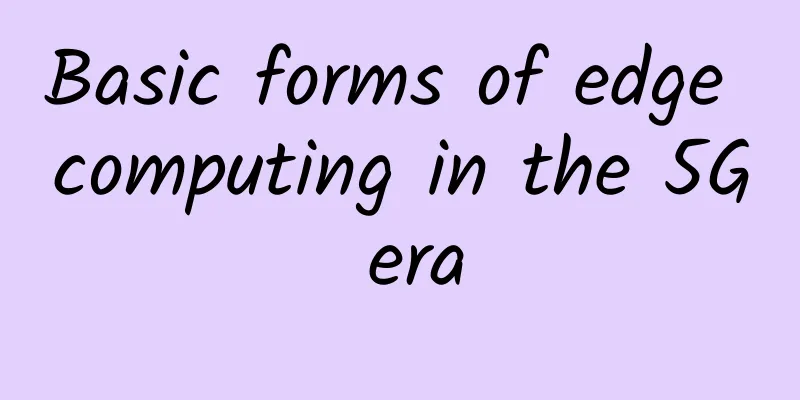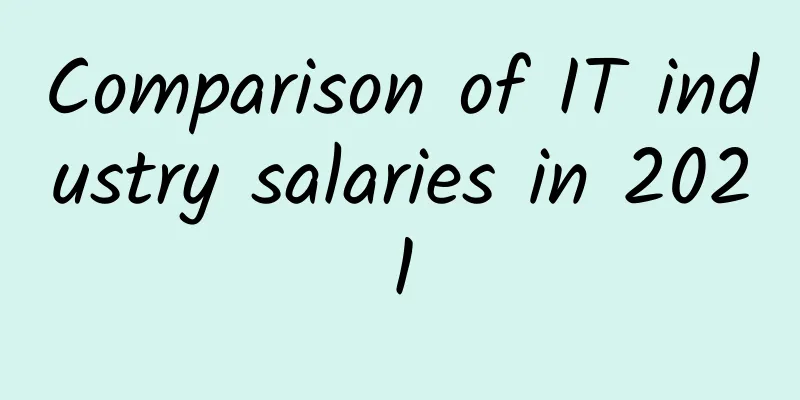Basic forms of edge computing in the 5G era

|
Cloud computing is based on technologies such as communications and the Internet, and has changed the modes of adding, using, and interacting with services such as infrastructure, platforms, and applications. From the user's perspective, cloud computing can provide services with lower costs and higher efficiency, which greatly accelerates the process of personal digitization. The characteristic of industry digitization scenarios is that they must be applicable to various industries. The fully centralized model of cloud computing may not be the optimal solution, such as the following scenarios.
The amount of data collected by the front end is too large. If all of it is uploaded in the traditional way, the cost will be high and the efficiency will be low. A typical example is the collection and processing of image data. All data needs to be uploaded to the central node for processing before being sent down, which often results in high transmission costs and long time, and cannot meet the requirements of instant interaction. A typical example is the unmanned driving scenario. For businesses with high requirements for business continuity, even a short-term cloud service interruption will have serious impact if they encounter network problems or central node failures. In addition, there is the issue of security and trust. Some customers do not allow data to escape their control, let alone leave their own systems. For such scenarios, centralized cloud computing centers cannot handle it. Edge computing is not only about solving the challenges that centralized computing faces in the digitalization of the industry. In fact, edge computing was originally designed to save communication costs. DARPA (Defense Advanced Research Projects Agency) was the first organization to propose and apply edge computing. During the Iraq War in 2003, the U.S. military piloted the digitization of individual soldiers. This was because the amount of information and data that needed to be processed in combat was so huge that even if soldiers carried dedicated digital devices, they would not be able to handle it all. If the data was uploaded to the data center of the combat center for processing, they would face two practical problems. It is extremely expensive to establish a high-bandwidth data channel (wireless base station or satellite) from each soldier to the data center at the combat center. The specialized digital equipment carried by soldiers weighs several kilograms, and it is difficult to increase the computing power (which would require further weight). DARPA proposed a plan: deploy a local computing device weighing tens of kilograms on the Hummer combat vehicle accompanying the soldiers. The device can process the information of digital soldiers within a range of 1 kilometer, and then the local computing device on the Hummer combat vehicle will process it and interact with the data center of the combat center. ISO/IECJTC1/SC38 definition of edge computing: Edge computing is a form of distributed computing that places main data processing and data storage at the edge nodes of the network. The Edge Computing Industry Alliance defines edge computing as an open platform that integrates core capabilities such as networking, computing, storage, and applications at the edge of the network close to the source of objects or data. It can provide edge intelligent services nearby to meet the key needs of industry digitalization in agile connectivity, real-time business, data optimization, application intelligence, security and privacy protection, etc. LF Edge (Linux Foundation Edge Computing Open Source Project), an influential edge computing open source project group in the industry, released the LF Edge white paper. The white paper divides edge computing into the following three categories based on the different locations of computing points distributed in "ends, pipes, and clouds", as shown in Figure 1. Figure 1: Schematic diagram of the industry's edge computing concept based on the location of "end, pipe, and cloud" 1. Edge Cloud: Edge cloud deployed in public cloud The edge cloud deployed by the public cloud is a cloud service provider-led edge computing that implements a small edge cloud in the form of an edge cloud. When encountering more complex content, it will be processed centrally on the cloud. Edge computing can improve customer response speed, enhance user experience, and save bandwidth, thereby diverting traffic to the centralized cloud ecosystem. 2. User Edge: Near-end computing on the user side/end side The local computing on the user side/end side will first perform computing and processing locally in a timely manner, only processing the workload of this user or this terminal, and then connect to the macro network to achieve mutual assistance with the upper-level node or surrounding nodes. The main application scenarios are as follows: User-side data does not leave the edge server of the park; Edge gateways in the form of networks or self-organizing networks formed by industries, enterprises or traffic administration; Edge computing in terminal/CPE form and vehicle-mounted form. 3. Service Provider Edge: Telecom Network Edge Computing The international standards organization ETSI defines telecom network edge computing as providing IT service environment and computing power at the edge of mobile networks, emphasizing proximity to mobile users to reduce network operation and service delivery latency and improve user experience. Service Provider Edge application scenarios mainly include MEC (Multi-Access Network Edge Computing) and Regional Network Edge Computing. In 2017, ETSI changed the full name of MEC to Multi-access Edge Computing, and MEC also moved towards fixed-mobile convergence and multiple access. As 5G technology gradually matures, MEC, as a key technology of 5G, has become a hot topic of common concern for upstream and downstream ecological partners in the industry. The following are typical MEC application scenarios:
Although the descriptions of the above-mentioned edge computing deployment scenarios are different, they have one thing in common: providing services at the edge of the network closer to the terminal to achieve local computing, save communication bandwidth, shorten latency, etc., so as to achieve the best overall benefits. Therefore, the essence of the overall edge computing solution is "connection + computing". |
<<: Authoritative release: Ten major events in China's industrial Internet in 2020
Recommend
When WiFi6 collides with 5G, is it a crisis or a business opportunity?
September 16, 2019 WiFi Alliance announces WiFi6 ...
Global 6G market expected to reach $20 billion by 2028
In the dynamic world of telecommunications, the a...
Are you familiar with the all-optical networks that are being deployed one after another?
Recently, China Telecom Gansu Company held a pres...
Is it a major setback or a cold shower? What happened to 5G?
Because South Korea postponed the commercializati...
Liu Liehong from the Ministry of Industry and Information Technology: my country's 5G base stations account for more than 70% of the world's total
On May 26, the 2021 China International Big Data ...
Be careful when using Wi-Fi, ES File Manager will wipe out all your data
[[255972]] If you use the popular file explorer a...
The road to communication - what do bridges, gateways, switches, and routers mean?
In network communications, there are several very...
36.2%! H3C leads the Chinese campus switch market
Recently, IDC released the "China Ethernet S...
If the Internet connection becomes slow, you don't need to change the router and restart it to restore it to full health
When you use WiFi at home to surf the Internet, i...
The scale of the industry has exceeded one trillion yuan, and the industrial Internet has been upgraded
Recently, data from the China Academy of Informa...
A funny story about three handshakes and four waves: How to seize the opportunity when you meet a girl you like?
I have a friend, Xiao Long, who confided in me: H...
What are the hot technologies in 2023?
An IEEE survey of 350 chief technology officers a...
A practical guide to running databases across regions and Kubernetes clusters
Translator | Kang Shaojing Planning | Yun Zhao Am...
5G Downlink Channel Sounding "CSI-RS"
Since 4G, the bandwidth of carriers has increased...
V5.NET: Hong Kong CN2 (HKTW-B3) limited 30% off, dual E5-2630L/32GB/1T SSD/10M CN2 monthly payment 625 yuan
V5.NET has announced a special event this month, ...









